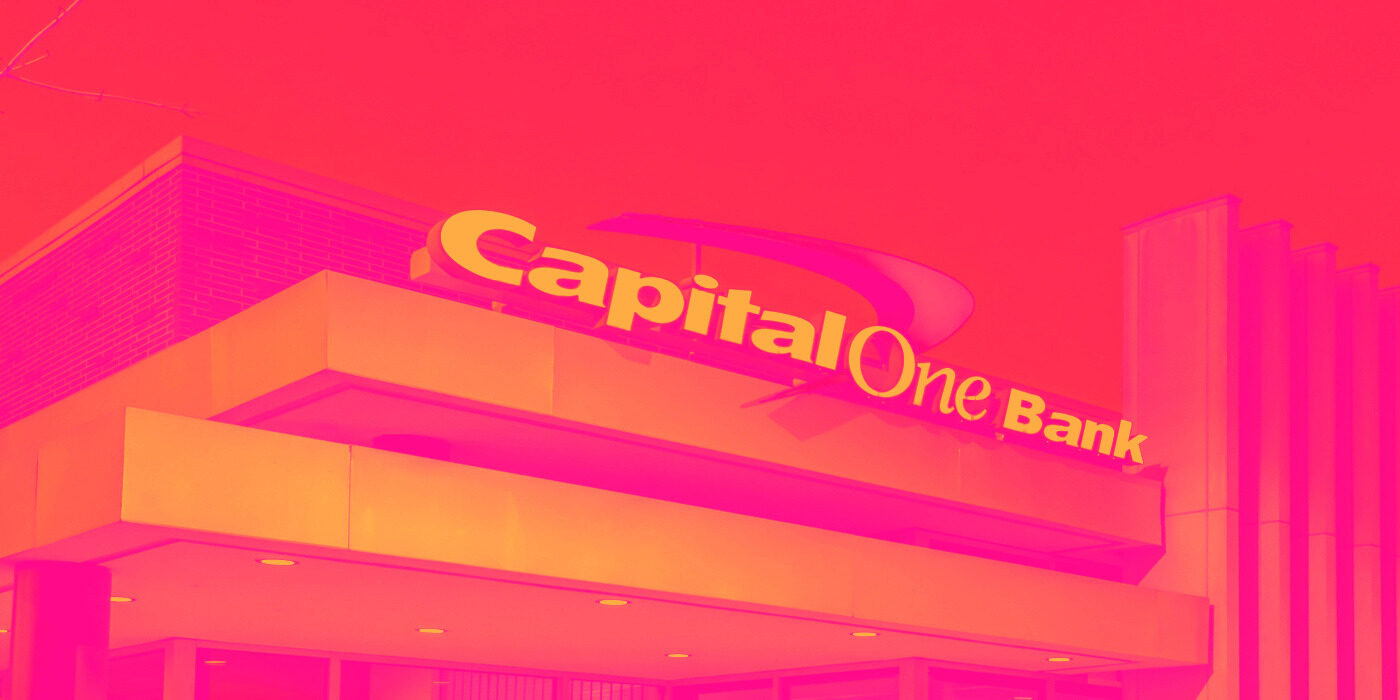
Financial services company Capital One (NYSE:COF) reported Q3 CY2025 results topping the market’s revenue expectations, with sales up 53.4% year on year to $15.36 billion. Its GAAP profit of $4.83 per share was 35.4% above analysts’ consensus estimates.
Is now the time to buy Capital One? Find out by accessing our full research report, it’s free for active Edge members.
Capital One (COF) Q3 CY2025 Highlights:
- Net Interest Margin: 8.4% vs analyst estimates of 8.1% (29.8 basis point beat)
- Revenue: $15.36 billion vs analyst estimates of $15.03 billion (53.4% year-on-year growth, 2.2% beat)
- Efficiency Ratio: 53.8% vs analyst estimates of 50.6% (323.7 basis point miss)
- EPS (GAAP): $4.83 vs analyst estimates of $3.57 (35.4% beat)
- Tangible Book Value per Share: $105.18 vs analyst estimates of $103.39 (6.1% year-on-year decline, 1.7% beat)
- Market Capitalization: $137.4 billion
Company Overview
Starting as a credit card company in 1988 before expanding into a full-service bank, Capital One (NYSE:COF) is a financial services company that offers credit cards, auto loans, banking services, and commercial lending to consumers and businesses.
Revenue Growth
A company’s long-term performance is an indicator of its overall quality. Any business can have short-term success, but a top-tier one grows for years. Thankfully, Capital One’s 11% annualized revenue growth over the last five years was decent. Its growth was slightly above the average financials company and shows its offerings resonate with customers.
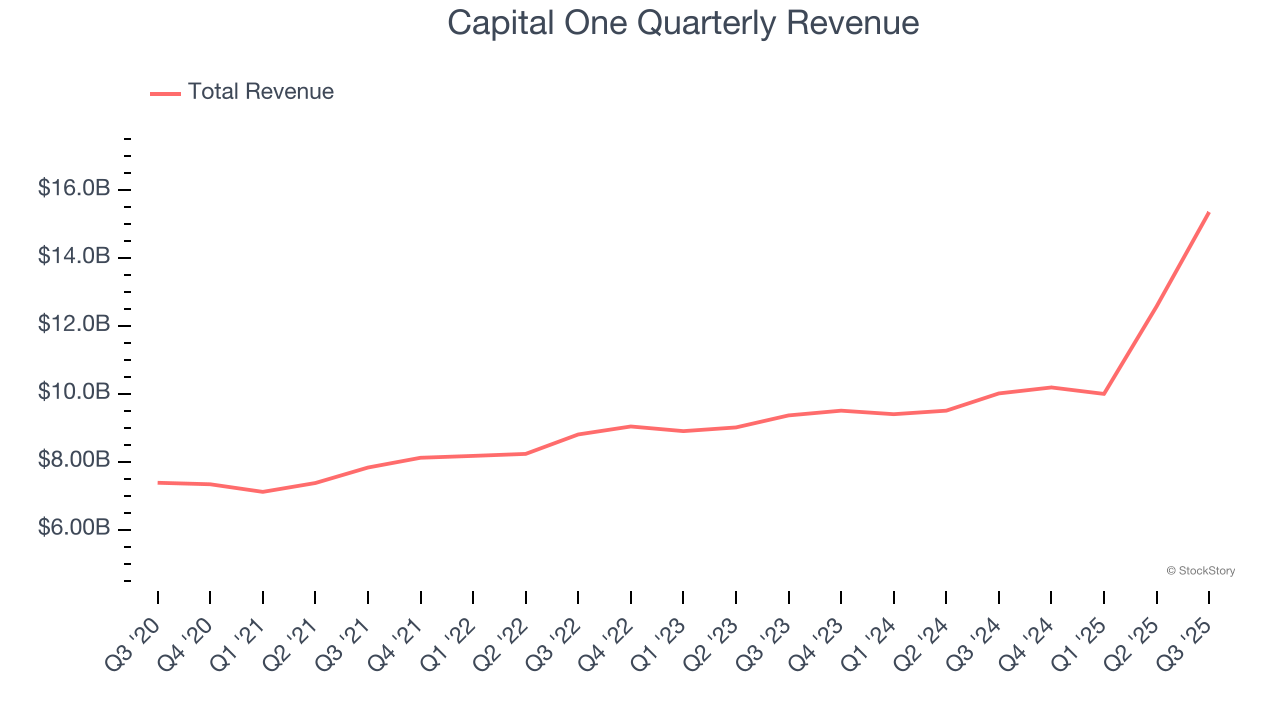
We at StockStory place the most emphasis on long-term growth, but within financials, a half-decade historical view may miss recent interest rate changes, market returns, and industry trends. Capital One’s annualized revenue growth of 15.1% over the last two years is above its five-year trend, suggesting its demand recently accelerated. 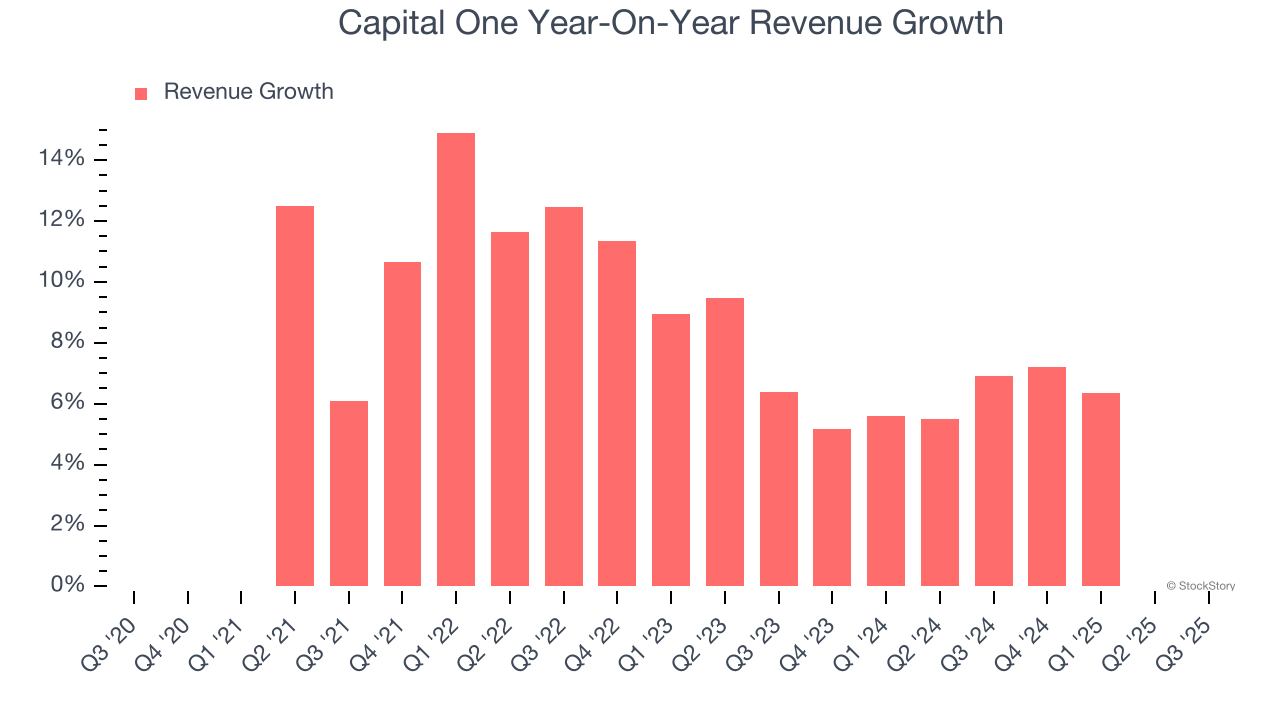 Note: Quarters not shown were determined to be outliers, impacted by outsized investment gains/losses that are not indicative of the recurring fundamentals of the business.
Note: Quarters not shown were determined to be outliers, impacted by outsized investment gains/losses that are not indicative of the recurring fundamentals of the business.
This quarter, Capital One reported magnificent year-on-year revenue growth of 53.4%, and its $15.36 billion of revenue beat Wall Street’s estimates by 2.2%.
Unless you’ve been living under a rock, it should be obvious by now that generative AI is going to have a huge impact on how large corporations do business. While Nvidia and AMD are trading close to all-time highs, we prefer a lesser-known (but still profitable) stock benefiting from the rise of AI. Click here to access our free report one of our favorites growth stories.
Tangible Book Value Per Share (TBVPS)
Financial firms generate earnings through diverse intermediation activities, making them fundamentally balance sheet-driven enterprises. Investors focus on balance sheet quality and consistent book value compounding when evaluating these multifaceted financial institutions.
When analyzing this sector, tangible book value per share (TBVPS) takes precedence over many other metrics. This measure isolates genuine per-share value and provides insight into the institution’s capital position across diverse operations. Other (and more commonly known) per-share metrics like EPS can sometimes be murky due to the complexity of multiple business lines, M&A activity, or accounting rules that vary across different financial services segments.
Capital One’s TBVPS grew at a tepid 4.6% annual clip over the last five years. However, TBVPS growth has accelerated recently, growing by 9.5% annually over the last two years from $87.78 to $105.18 per share.
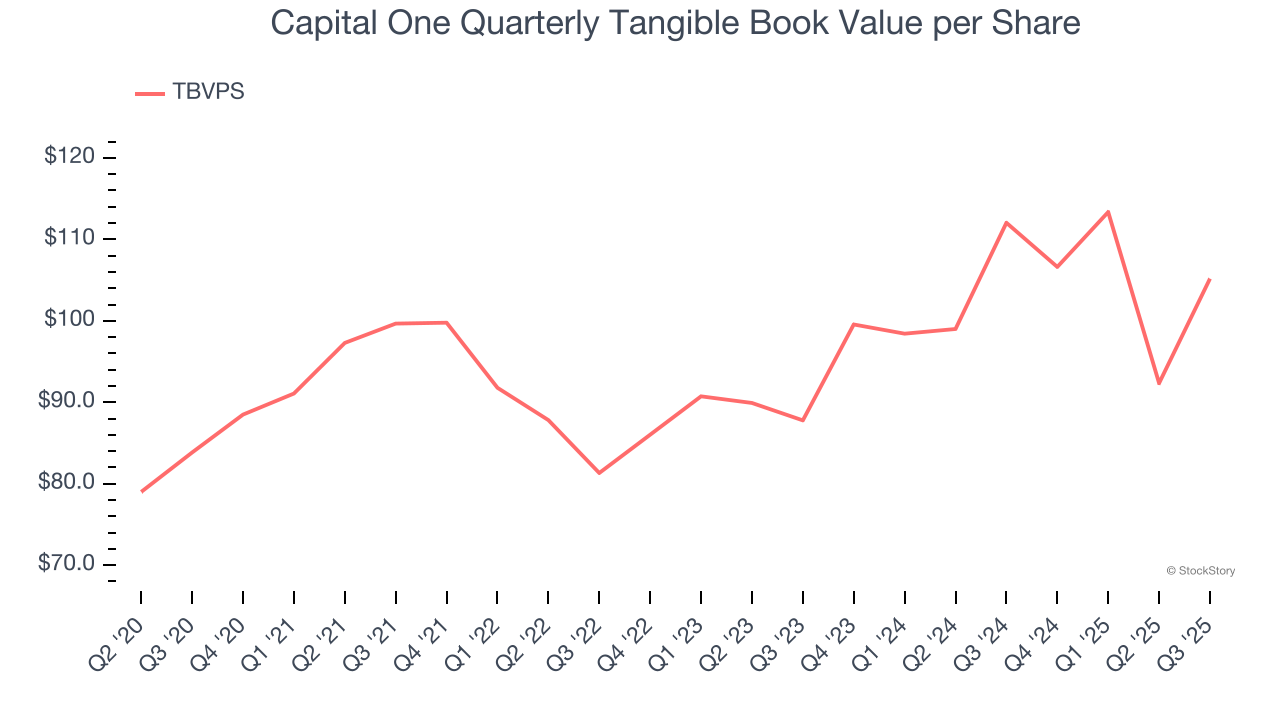
Tangible Book Value Per Share (TBVPS)
Diversified financial companies operate across multiple business segments, from investment banking and trading to wealth management and specialized lending. Their valuations hinge on balance sheet quality and the ability to compound shareholder equity across these diverse operations.
This is why we consider tangible book value per share (TBVPS) an important metric for the sector. TBVPS represents the real net worth per share across all business segments, providing a clear measure of shareholder equity regardless of the complexity of operations. EPS can become murky due to the complexity of multiple revenue streams, acquisition impacts, or accounting flexibility across different financial services, and book value resists financial engineering manipulation.
Capital One’s TBVPS grew at a tepid 4.6% annual clip over the last five years. However, TBVPS growth has accelerated recently, growing by 9.5% annually over the last two years from $87.78 to $105.18 per share.
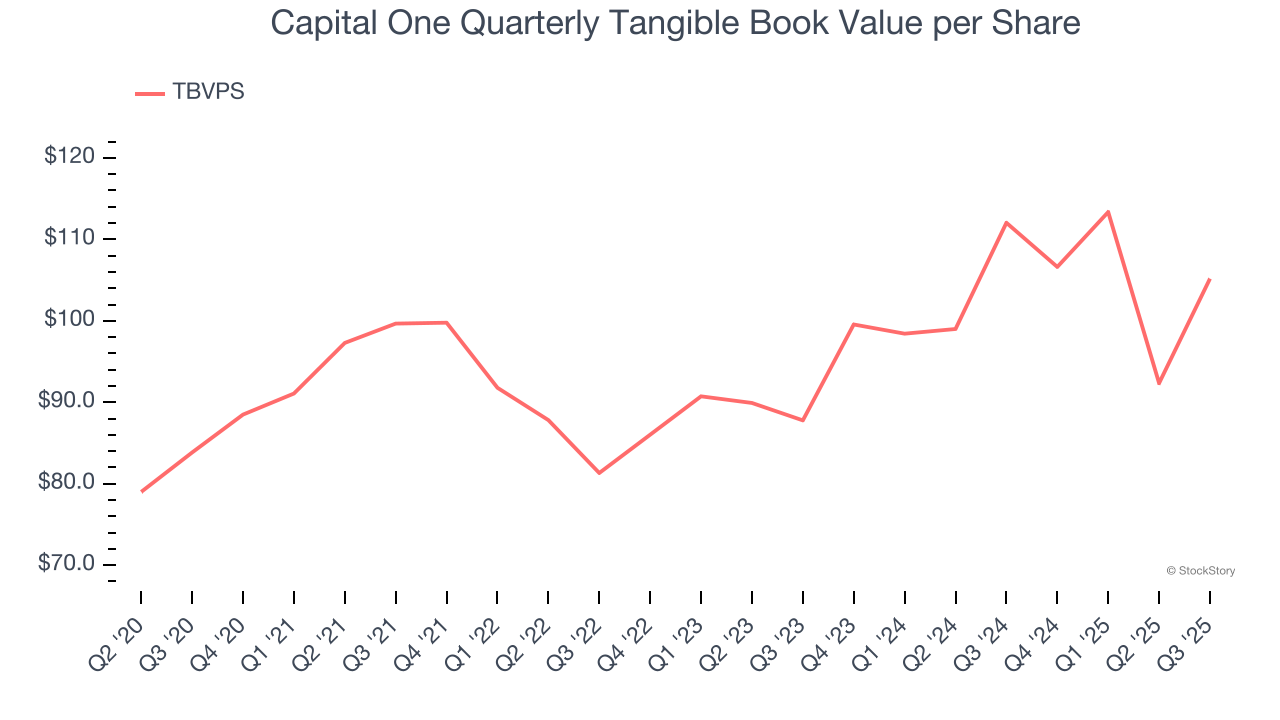
Key Takeaways from Capital One’s Q3 Results
It was good to see Capital One beat analysts’ EPS expectations this quarter. We were also excited its net interest margin outperformed Wall Street’s estimates by a wide margin. Zooming out, we think this was a good print with some key areas of upside. The stock traded up 3.5% to $224.80 immediately following the results.
Indeed, Capital One had a rock-solid quarterly earnings result, but is this stock a good investment here? We think that the latest quarter is only one piece of the longer-term business quality puzzle. Quality, when combined with valuation, can help determine if the stock is a buy. We cover that in our actionable full research report which you can read here, it’s free for active Edge members.
